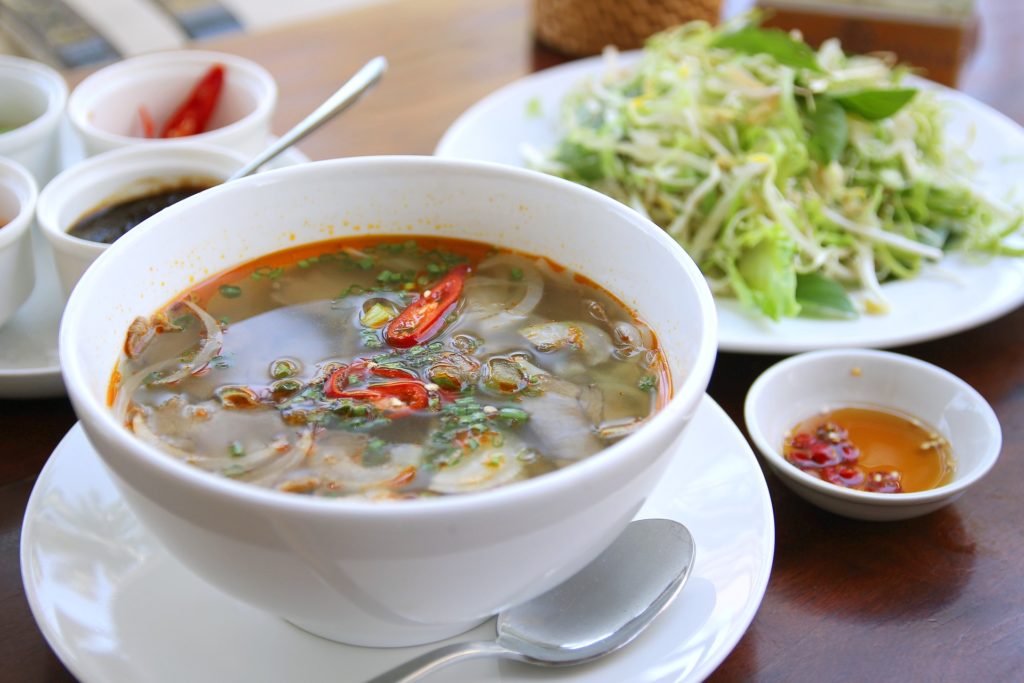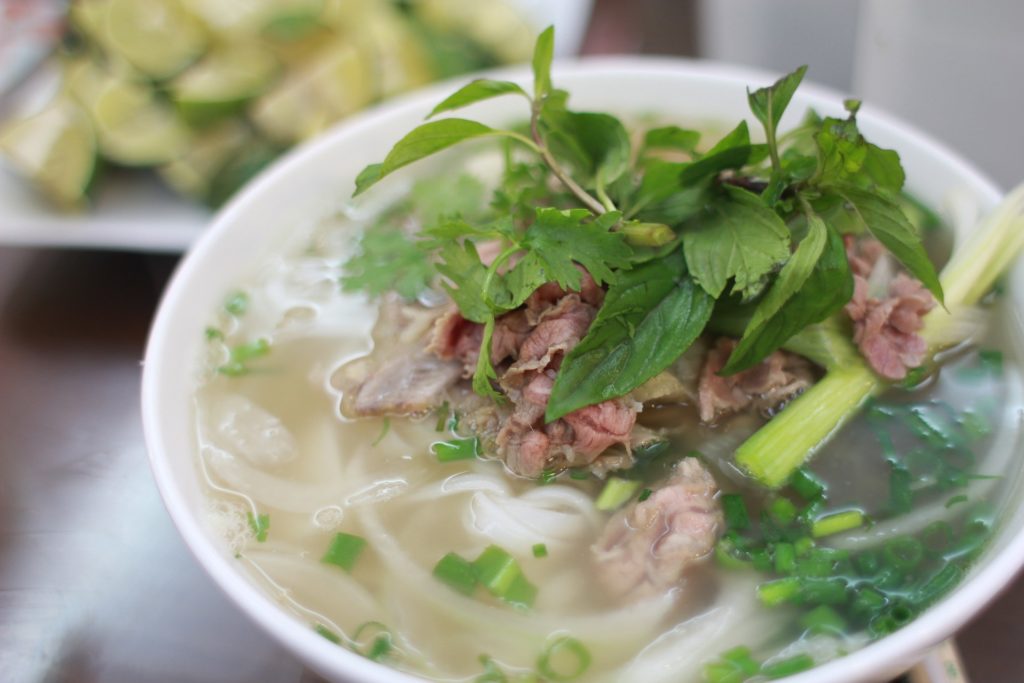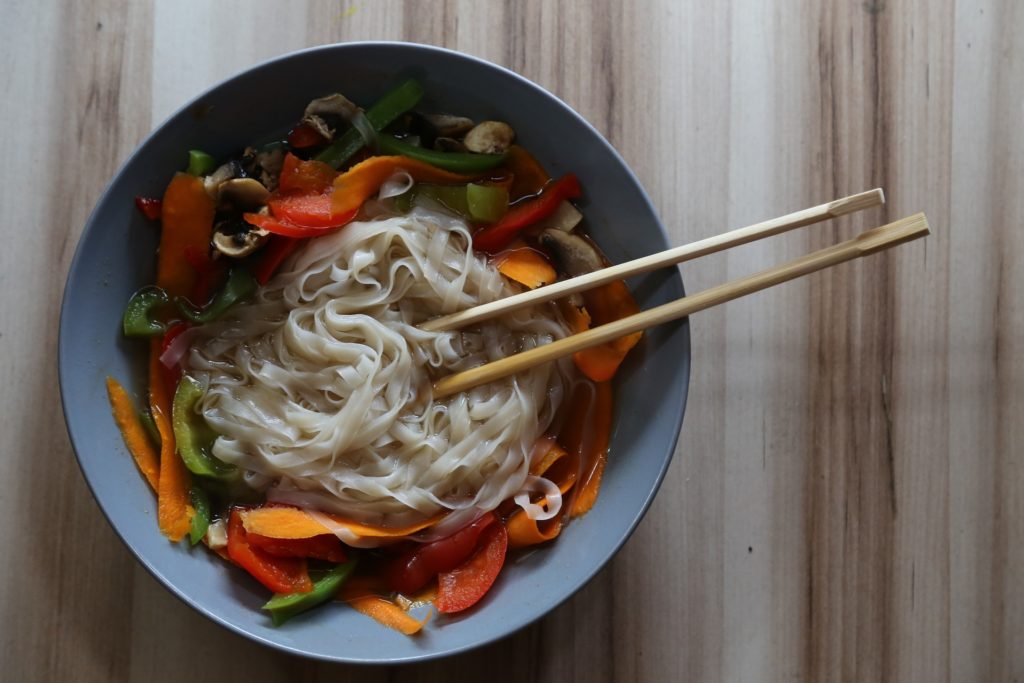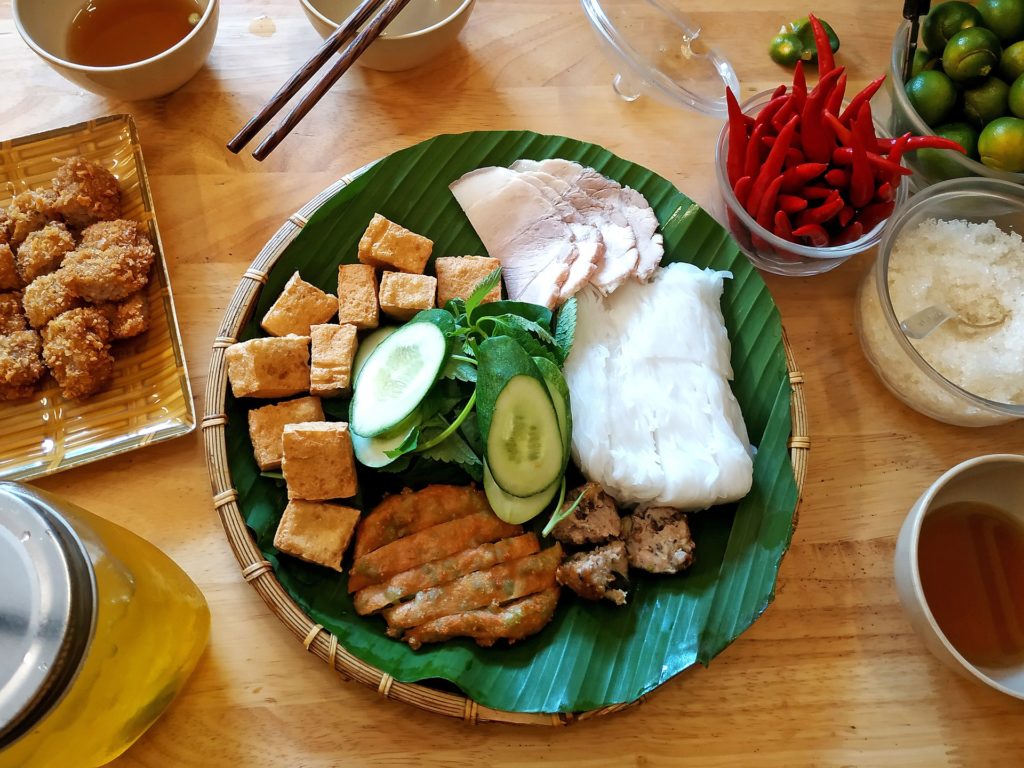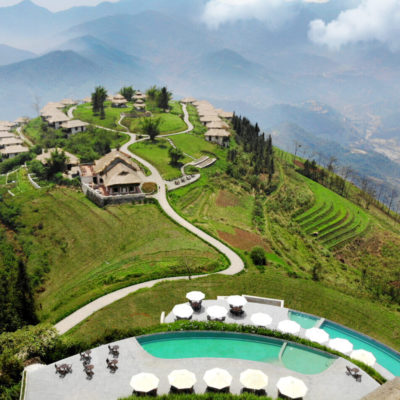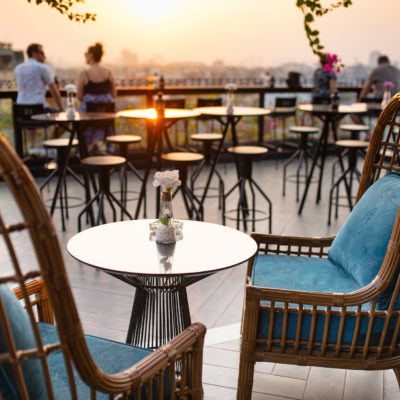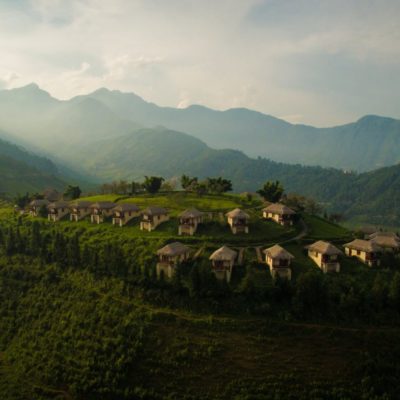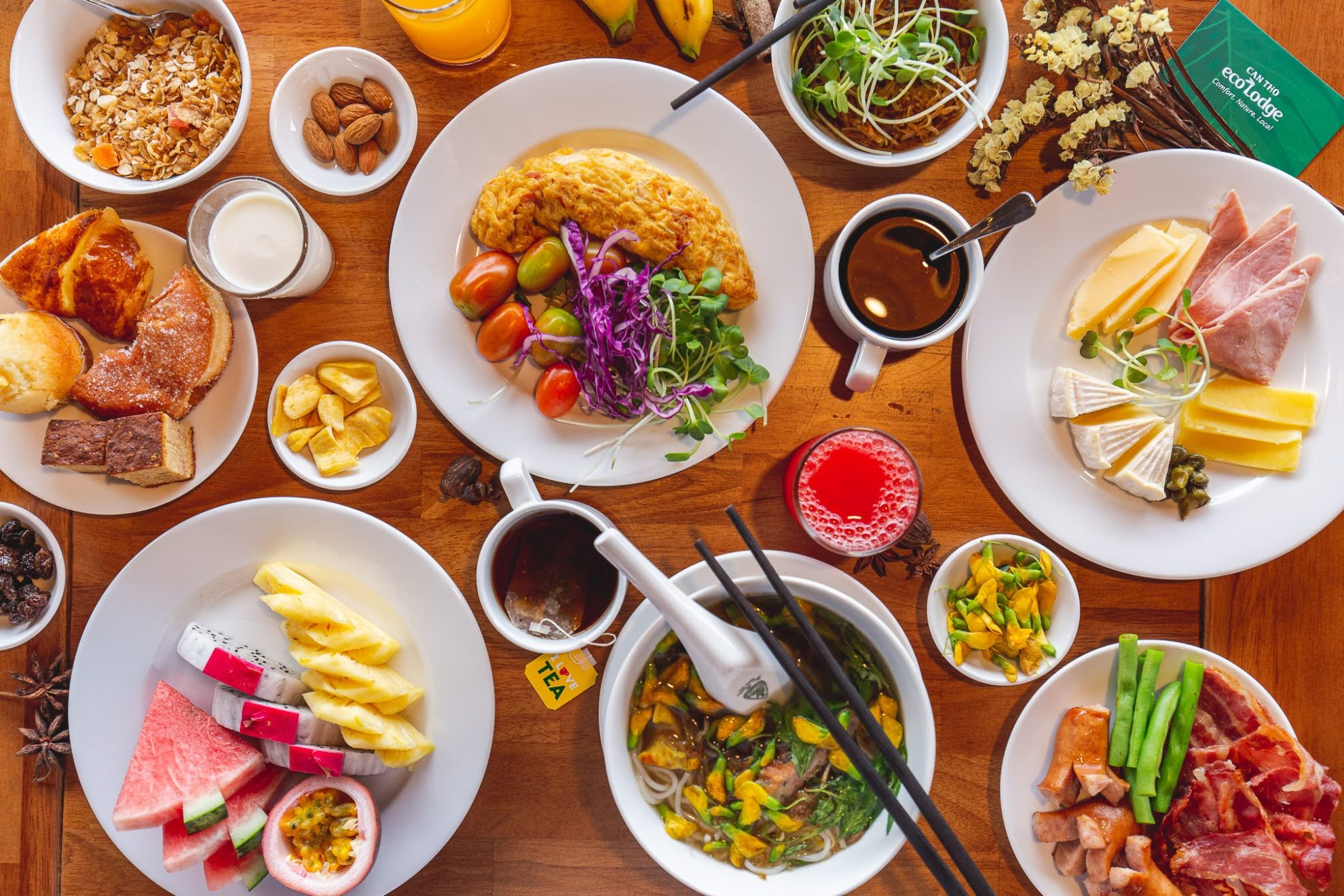
Treats from the Peninsula: Vietnamese Cuisine
Vietnam is home to over 96 million people, making it the sixteenth most populous country in the world. Within this prodigious population are 54 officially recognised ethnic minority groups originating from places as seemingly disparate as the mountains of Southwest China to the tropical islands of Indonesia. The land which we now call Vietnam has been ruled by a succession of polites and kingdoms throughout its long history, from the kingdoms of Champa and Funan to the successive Chinese dynasties which held sway for a millenia and finally to its occupation as part of the French colony of Indochina.
This rich history has left an indelible mark on Vietnamese culture and what better proponent of a nation’s culture, what more immediate and visceral way to experience it, than through their food.
Vietnamese Philosophy of Food
At the heart of traditional Vietnamese cuisine is the Chinese philosophy of Wuxing, which translates as Five Phases and shares some similarities with the four Classical Western elements: water, earth, air and fire.
These five phases, or elements, are to be found in many traditional Vietnamese dishes and correspond to five fundamental types of taste: spicy (metal), sour (wood), bitter (fire), salty (water) and sweet (earth). The philosophical influences don’t end there, as the world-famous Yin and Yang system of thought also finds its way into the thinking behind the food. This focus on the benefits of balance is mainly seen in the combination of hot and cold elements such as the serving of cold seafood with warm ginger or the serving of chicken primarily taking place in the winter due to its signification as a warm meat.
Despite the shared philosophical underpinnings, there is no singular definition of Vietnamese food, the country’s climate is too varied, its people too diverse for this to be possible. Nevertheless, the cuisine of Vietnam may be roughly divided into three regional groups: Northern, Central and Southern.
A Street Food Odyssey
Dishes from the northern highlands have a number of unique characteristics, many of which stem from the region’s harsher weather and the more rudimentary agriculture of its predominantly rural population. However, this is not to say that the quality of the food is any less than their southern counterparts, with many of the most famous Vietnamese dishes originating amongst the hills of the north. And where better to sample some of these northern delicacies than in the bustling street markets of Hanoi’s Old Quarter.
As the capital city of Vietnam, Hanoi is as vibrant and diverse as you would expect, and at no time is this more evident than when walking its winding streets at night.
Nimble scooters weave their way through throngs of natives and tourists alike, every person on their own sensory pilgrimage under the stars of a darkening sky. The old stones of the capital bathed in the golden warmth of lanterns and the flickering neon lights of a never-ending stream of stalls and vendors lining the people-pocked streets. Salesman pitches fuse with the latest pop hits blasting from a distant stereo and the laughter of old friends enjoying a hot meal together.
The night air perfumed with a dizzying blend of fried meats and fragrant spices. Deep fried shrimp cakes, pork-filled steamed rice rolls, sizzling turmeric and coconut cream seasoned pancakes. Endless options, each as exciting as the last – this is Hanoi at night, an experience unlike any other.
Food for Kings
The food of Central Vietnam takes a dynamic leap from the more subdued tastes of the North as its climate and mountainous geography makes for the perfect spice growing conditions. This medley of exciting local spices has been used in traditional recipes for centuries, with many of the dishes famous today having been perfected in the royal courts of Huế, once home of the Nguyễn, Vietnam’s final dynasty.
These kings were famous for demanding the best food, and were even known to challenge their cooks to prepare grand fifty-two course meals, often tasking their servants to elevate popular peasant dishes to a standard befitting a king. Naturally, the culinary ingenuity of the royal chefs was stretched to the limit in order to keep their overlords content and their taste buds excited.
An unenviable task, but one which visitors to the pagoda-strewn city are reaping the tasty benefits of today. The imperial imprint of the former rulers and their prodigious appetite is still to be seen in the refined presentation, rare ingredients and small serving sizes of many local dishes.
A great example of one of these bite-sized dishes is bánh bèo, or ‘water fern cake’. Despite its status as a street food, many high-end restaurants serve this beloved dish, elevating it from its humble origins like the royal chefs of old. A thin chewy rice cake bedecked with a smattering of finely ground dried shrimps and crispy pork skin finished with a drizzling of scallion oil, this local favourite is served in small bowls with a dipping sauce made from fish sauce and shrimp broth. Relatively simple in its ingredients, the magic of this staple of everyday Huế life comes from the delicate art of its preparation and presentation.
Southern Delicacies
At the foot of the peninsula, the rolling hills and steep mountains give way to the fertile soil of the coastal lowlands and the labyrinthine rivers and mangrove swamps of the Mekong Delta. This region boasts some of the country’s most beautiful stretches of coastline and seafood unsurprisingly forms a core component in many signature southern dishes.
One such dish which shows off some of the best seafood Vietnam has to offer is Lẩu mắm. Essentially a fish hotpot, this southern favourite finds the perfect balance between fresh fish and steamed vegetables. Cooked in a salty fish broth seasoned with a bevy of herbs and spices from spicy red chilli to fragrant lemongrass, and tempered with the rich creamy flavour of coconut cream, this dish is a delight before the main ingredients are even added.
Into this broth goes a medley of fresh seafood, common choices being juicy Cá Kèo, catfish, shrimp and eel, as well as slices of the country’s most popular meat: pork. Tossed into this bubbling pot are a colourful array of vegetables including eggplant, beansprouts, water dropwort and the yellow petalled Dien Dien flower. This dish is a must for seafood and vegetable lovers alike. But what if you want to cook a dish yourself? Where do you go to source the best ingredients?
Resting on the southern bank of the Hậu River, a major tributary of the Mekong, is the fourth largest city in Vietnam, Cần Thơ. The city is perhaps best known for its floating markets which people flock to from all over the world.
The largest and most famous of these river-borne daily markets is Cai Rang, where hundreds of small boats double as shops selling anything you could imagine, from fresh food to household appliances. Just look at the food laden bamboo poles protruding from the bows of the boats to see what fruits and vegetables are available on that specific day. Be it a speared sweet potato or pole-bound pumpkin, anything you need to add that finishing touch to your traditional Vietmanese dish can be found in Cai Rang. Rowed from coffee boats to noodle boats and back again by a friendly local guide, this is a truly special experience not to be replicated anywhere else in the world.
The National Dish
No discussion of Vietnamese cuisine is complete without mentioning Phở. Perhaps the country’s biggest culinary export, this iconic noodle soup can be found across the globe. Consisting of three basic components: rice noodles, meat and a hearty broth; the dish may seem simple but the plethora of spices and garnishes used in its construction make its flavour anything but. Phở made in the north, in particular the city of Hanoi, is said to be more authentic than the version made in the south, as it originated in the highlands.
Northern Phở is characterised by its flavoursome fatty stock, blanched whole green onions and its liberal use of tasty garnishes like garlic and coriander. Often served with this northern variation is the churro-esque Youtiao, a tender strip of dough which is lightly salted and fried until golden-brown.
On the other hand, Southern Phở is characterised by its thinner noodles, sweeter broth and a broader use of fresh vegetables such as bean sprouts. A greater variety of meat is often seen in the Phở of the south compared to the more simple preferences of the north.
Debate over which of the versions is the tastiest is a hot topic amongst the people of Vietnam, with opinion changing depending on which part of the country you’re standing in. With the current score tied, it may just fall on you to settle the age-old question.
A Culinary Star Ascending
Vietnamese often proudly refer to their home as the Land of the ‘Ascending Dragon’, a fearsome name for a relatively small country. It’s true, Vietnam may not be the largest country in the world or its influence the most far-reaching and it probably isn’t one of the names which jump to mind when thinking of the national greats of the culinary world like their big neighbour China.
Yet despite all this, the hardy people of Vietnam, through a century of political turmoil and tribulations, have managed to carve out for themselves an impressive seat at the table of popular cuisine. A recent YouGov poll ranked Vietnamese food as the thirteenth most popular cuisine in the entire world. This is a country on the rise from the ruins of a difficult century. The question is, will you be there to witness the dragon ascending?
“When thinking of Asian food, I think it is common to instantly gravitate towards Chinese. For obvious reasons, it’s incredibly tasty and hugely popular throughout the world. But Asia is made up of multiple countries, with each nation bringing something different to the multifaceted jewel which is its continental cuisine. Through researching this article, I’ve come to realise that Vietnam is one of the most exciting of these countries, and its food one of the most deserving of our time and enjoyment. ”

